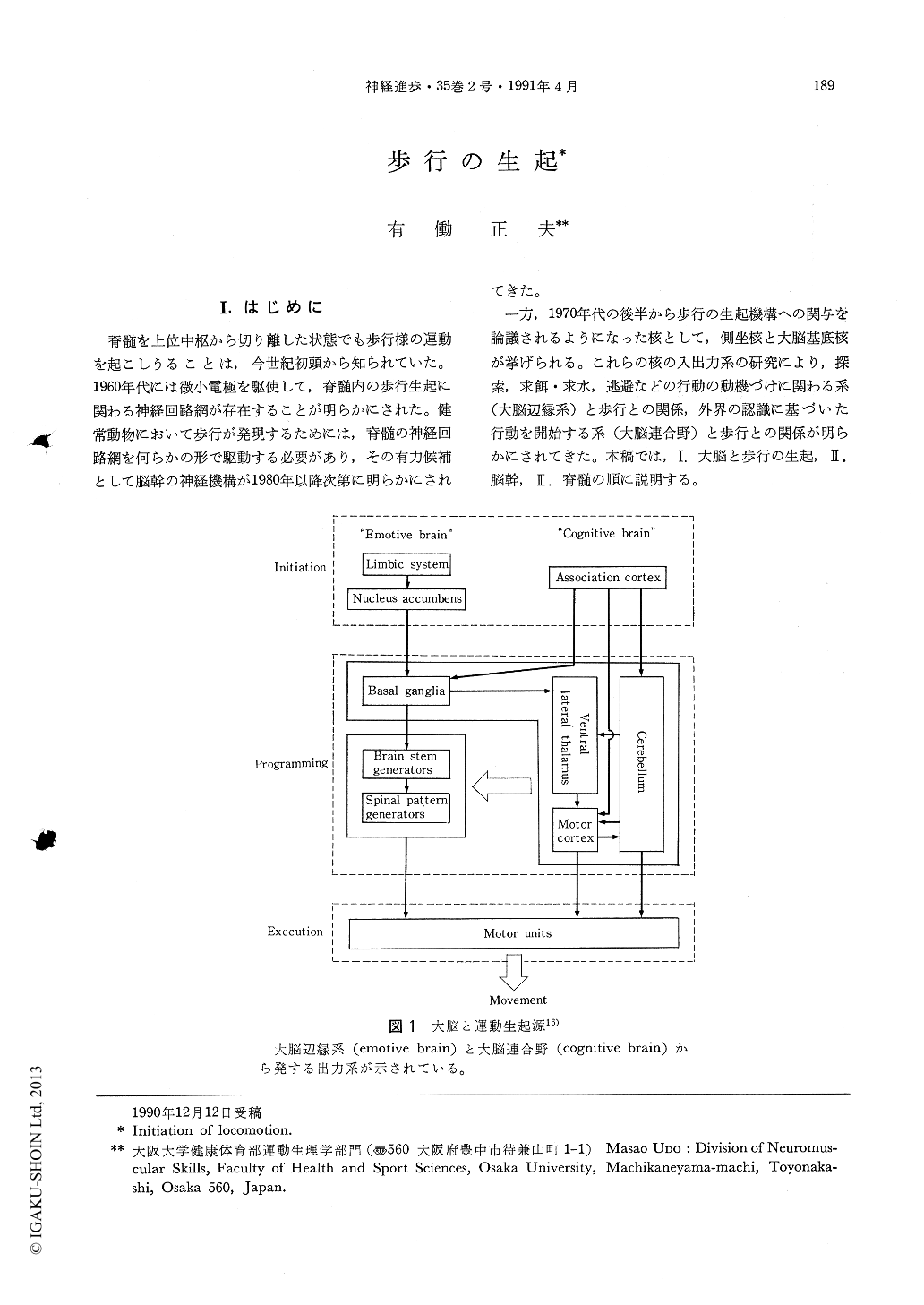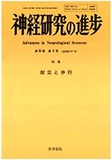Japanese
English
- 有料閲覧
- Abstract 文献概要
- 1ページ目 Look Inside
I.はじめに
脊髄を上位中枢から切り離した状態でも歩行様の運動を起こしうることは,今世紀初頭から知られていた。1960年代には微小電極を駆使して,脊髄内の歩行生起に関わる神経回路網が存在することが明らかにされた。健常動物において歩行が発現するためには,脊髄の神経回路網を何らかの形で駆動する必要があり,その有力候補として脳幹の神経機構が1980年以降次第に明らかにされてきた。
一方,1970年代の後半から歩行の生起機構への関与を論議されるようになった核として,側坐核と大脳基底核が挙げられる。これらの核の入出力系の研究により,探索,求餌・求水,逃避などの行動の動機づけに関わる系(大脳辺縁系)と歩行との関係,外界の認識に基づいた行動を開始する系(大脳連合野)と歩行との関係が明らかにされてきた。本稿では,I.大脳と歩行の生起,II.脳幹,III.脊髄の順に説明する。
Cerebral cortex concerns with initiation of locomotion through two major routes. One is the limbic system to initiate food-seeking, escape from predators and other behaviors essential for adaptation and survival. The other is the association cortex to initiate motor actions based on the recognition of the environment. Recent anatomical and physiological findings now make it possible to investigate the neural substrates with which the limbic and the association cortex are interfaced.
It has been proposed that nucleus accumbens is a key component since it receives inputs from limbic forebrain structures, either directly or indirectly via the ventral tegmental area (VTA) of Tsai, and sends signals via the globus pallidus. The association cortex communicates with the caudate nucleus either directly or indirectly via the substantia nigra pars compacta (SNPC). Dopaminergic neurons in the VTA and SNPC may play a role in selecting or filtering the signals passing through the nucleus accumbens and the caudate nucleus. Thereafter, the major two routes from the cerebral cortex may converge onto the same brain stem centers, such as substantia nigra pars reticulata (SNPR) and pedunculopontine nuclues (PPN). Especially the PPN seems to receive information from many structures including SNPR which may concern with initiation of locomotion. Thus, the PPN may be a common target aimed by different initiators.

Copyright © 1991, Igaku-Shoin Ltd. All rights reserved.


